What to Do If You Are Lost in the Woods
Even if you’re going to hike in the woods for just a couple of hours and are sure that you know the area well, it’s always good to be prepared for any unexpected situation.
5-Minute Crafts prepared a guide for you with 10 recommendations that will help you not get lost in the woods or find your way out if you do.
1. Be well prepared for a hike in the woods.
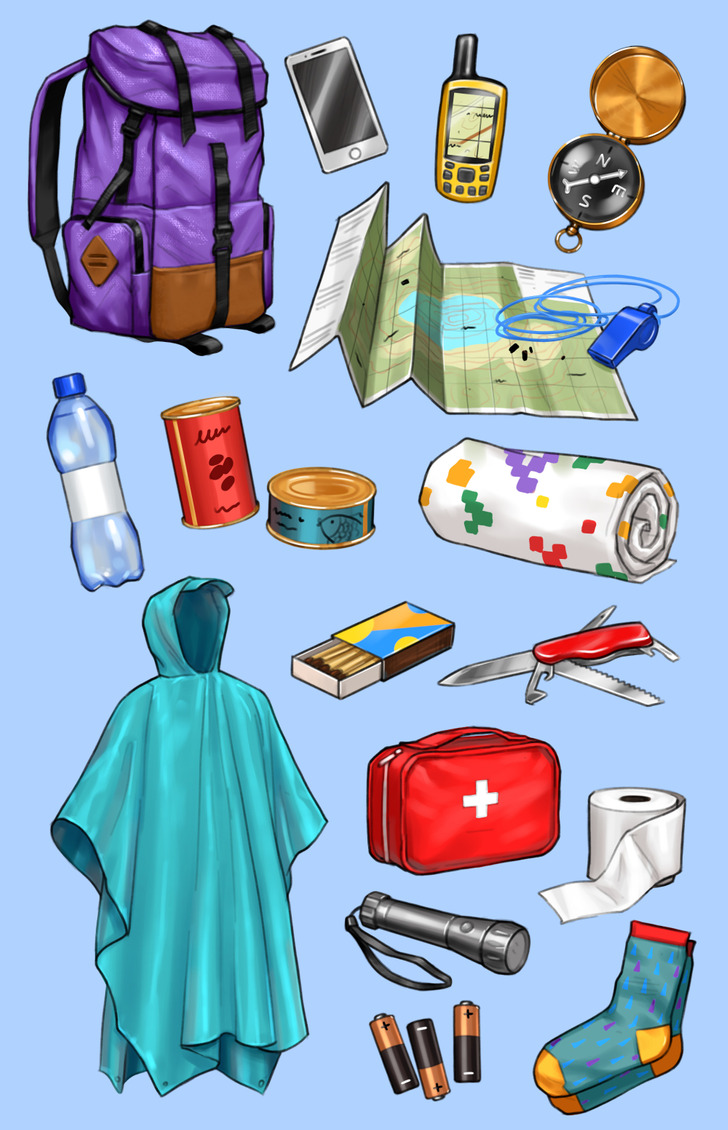
The best tool for survival is your skill of advanced planning. Even if you’re going to hike for a few hours, pack enough essentials with you. This way, you’ll be able to call for help, you’ll be ready for any weather, and you’ll have food and water.
Take a capacious backpack into the woods and put the following things into it:
- A fully charged phone
- Means of navigation: GPS, a compass, and a topographic map
- A whistle
- Food and water
- A blanket
- A raincoat
- Matches in a waterproof container or a lighter
- A knife or multi-use tool with a cutting surface
- Medications that you might need during your trip
- Toilet paper
- A flashlight
- Extra batteries for the flashlight
- A spare pair of socks if the ones that you’re wearing get wet
Also, think about the clothes you plan to wear. Opt for sturdy hiking boots and sportswear made from synthetic materials that prevent heat loss. Finally, don’t forget to inform your family or friends that you are going to the woods. Tell them where you are going, when you will return, and what route you will take. This information will help them organize a search if you get lost.
2. Stay calm.
If you are lost, the first thing you should do is calm down. Take 1-2 minutes to focus before taking any action. This will help you avoid doing anything impulsive that can worsen your situation.
It’s certainly normal to feel frustrated and confused when you can’t find your way out of the woods. However, panic will cloud your judgment and limit your problem-solving abilities.
3. Stay in one place.
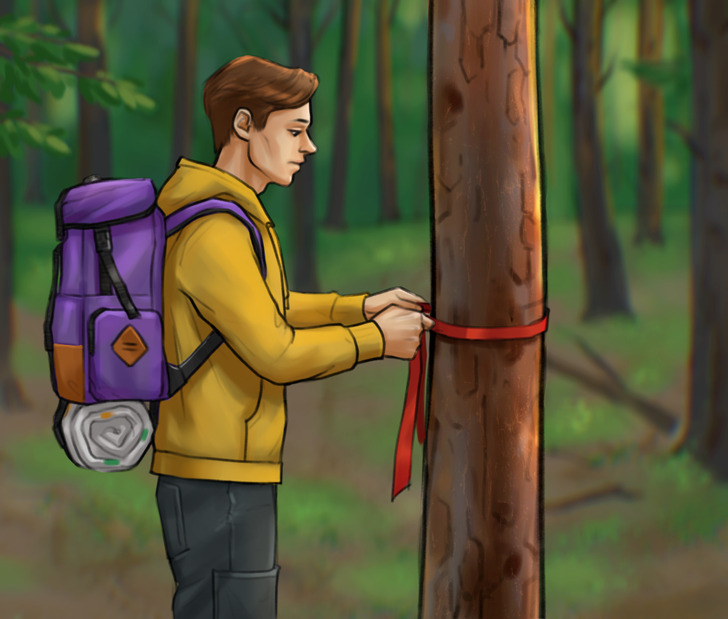
While you are contemplating a way out of this situation, stay in one place so as not to get lost even more. It will be easier for search parties to find you if you stay where you are and don’t wander through the forest. However, if there is a trail nearby, it’s better if you return to it and stay there. You are more likely to meet people there who will help you find the way out.
Just in case, mark the place where you got lost with branches, stones, or specially prepared materials. For example, tie a red ribbon around the nearest tree. Even if you have to move away for a while, you will be able to return to the starting point.
4. Call emergency services.
5. Use a map or GPS navigator.
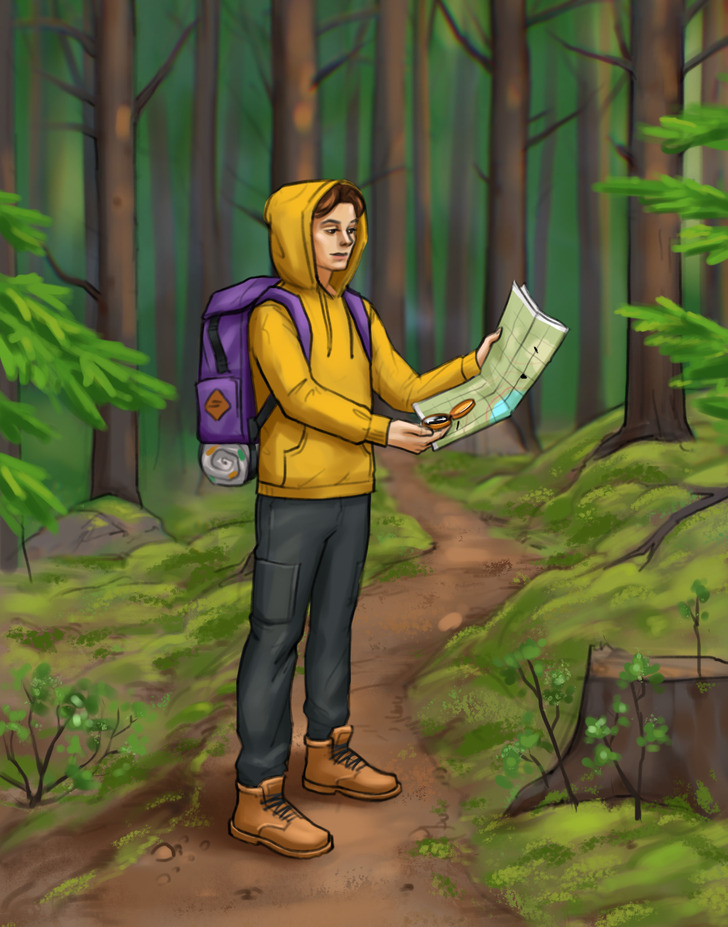
If there is no signal and you can’t call the rescue service, use a GPS navigator, a compass, and a topographic map of the area. Take them with you and carefully study the map before going into the woods. Perhaps, in a critical situation, you will be able to determine your location and figure out which way to go with the help of the compass. This way, you will be able to find the way out of the woods on your own.
In addition, it’s useful to install a hiking navigation application on your phone. As a rule, it combines everything: a GPS navigator, a compass, and a map of the area. If the GPS signal fails, you can navigate the map and find directions using the compass.
However, you should not rely only on your phone because it can run out of power, break down, or work incorrectly. In addition to it, be sure to take a GPS navigator, a compass, and a topographic map of the area with you.
6. Make an action plan.
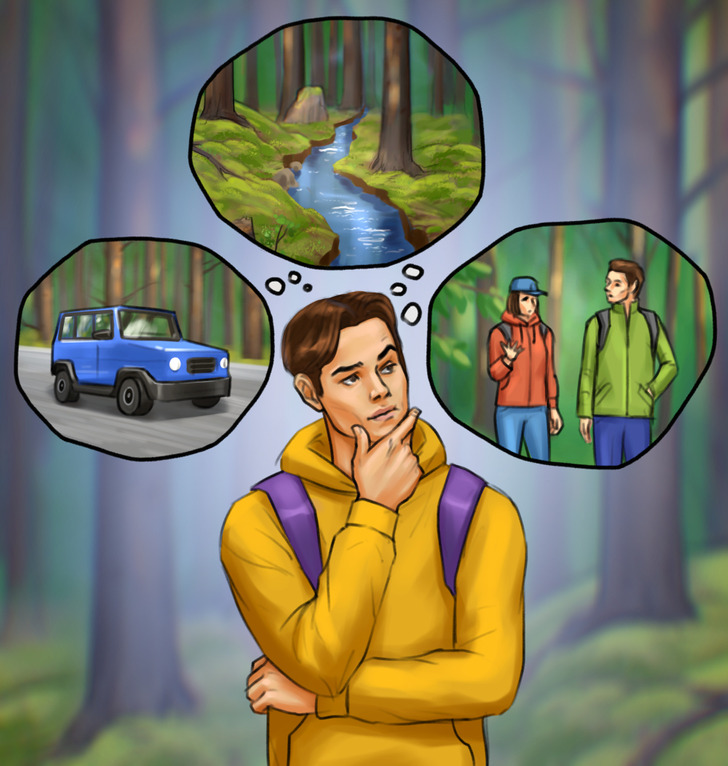
If the devices don’t work or you don’t have them, try to navigate the area yourself and draw up an action plan.
Think about how you got there, what route you took, and what places or natural sights you saw along the way. Look around to see if there are any landmarks nearby to help you figure out where you are, like mountains or bodies of water. Listen to sounds: you may hear traffic, the sounds of running water, or someone talking.
Based on your observations, think of several possible plans and act according to one of them. Most importantly, don’t move until you know exactly where to go. Before doing this, don’t forget to mark the place where you got lost if you haven’t already done so.
Remember, it’s best to stay in one place if:
- You are not sure about your route.
- It’s nightfall.
- You’re injured or exhausted.
7. Find shelter.
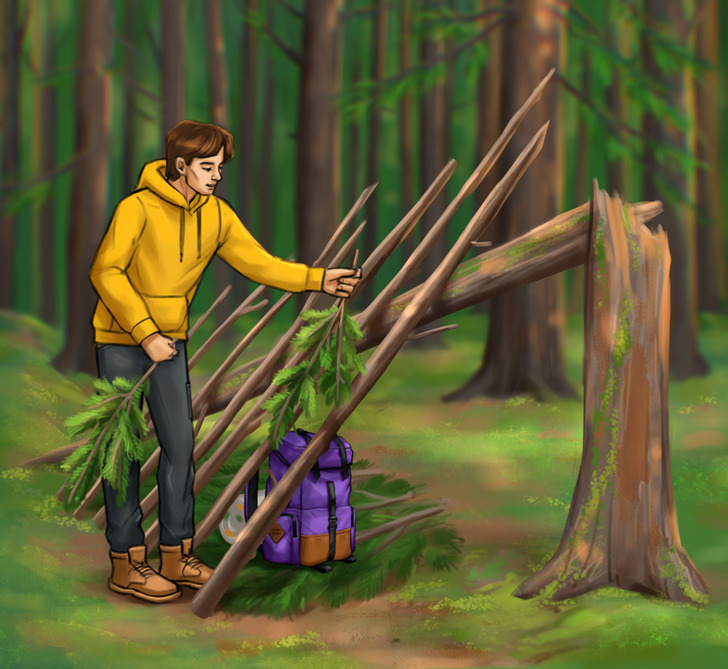
If you understand that you’ll have to spend the night in the woods, start looking for some shelter. Look for existing structures that you can use as a cover. If you can’t find any, try to build some shelter yourself.
For example, look for a large piece of a fallen tree and place it on a stump or another part of the tree. Then lean several smaller fragments against it at an angle and cover the makeshift shelter with leaves and branches.
8. Start a fire.
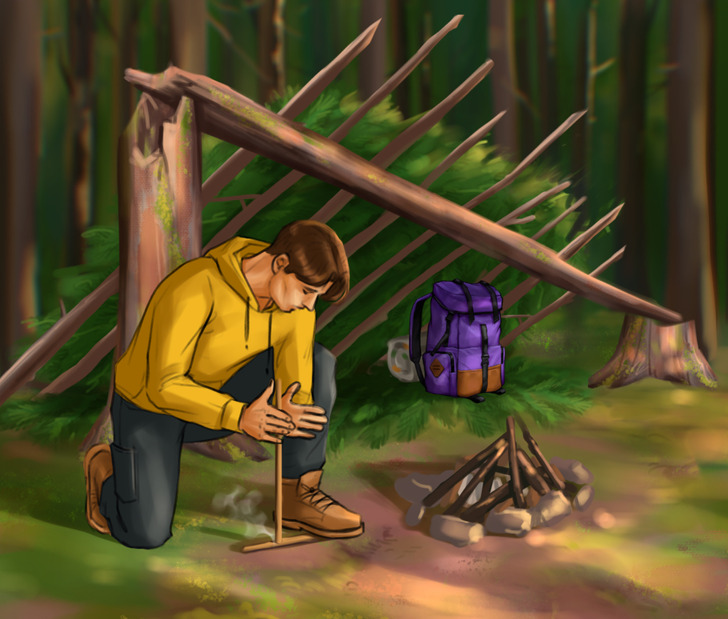
Fire is necessary to keep you warm, boil water, and cook food. Gather as much dry wood, twigs, bark, leaves, and paper as you can to start a fire and fuel it until morning.
If you didn’t bring matches or a lighter with you, use this method of starting a fire. Take a board or log, make a V-shaped hole at the edge and put some dry bark or leaves under it. Then make a small indentation next to the hole and take a stick. The stick should be at right angles to the board or log. While maintaining pressure on the board or log, begin to rapidly rotate the stick between your hands as you work your way down the length of the spindle. Do this until the friction creates a spark or smoke. Then carefully move the coals into the hole at the edge and blow on them until the dry bark and leaves start burning.
9. Find a source of food and water.
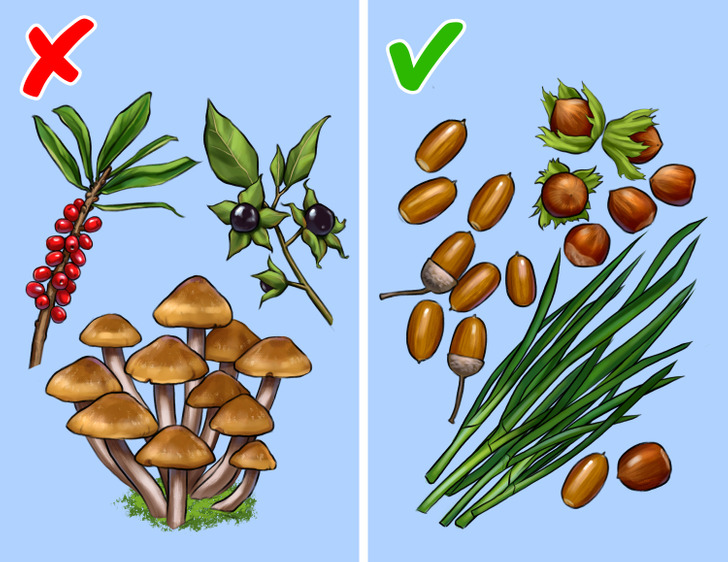
If you are going to the woods, don’t forget to take water and food with you. They will help you get through a difficult situation. However, if you don’t have supplies or you’ve run out of them, it’s important to find sources of food and drink.
If you can start a fire and have a suitable container, look around for a stream or river. Be sure to boil water for at least 3 minutes before drinking it. If you can’t start a fire, start collecting rainwater or dew from the leaves.
If you’re worried about running out of food, look around for acorns, hazelnuts, wild onions, and garlic. But if you are not sure whether the food you found is edible, don’t eat it. It’s also a good idea to avoid berries and mushrooms because edible varieties have many poisonous counterparts.
10. Look for ways out of the woods.
Get up early in the morning so that you can find your way out before sunset. Think again about how you got there, what route you were taking, and what places you came across along the way. Look around for landmarks and listen to sounds. Gradually explore the area and try to find a way out.
Be sure to mark your path and return to the starting point if you couldn’t find a way out. Also, check the signal on your phone from time to time. You may be able to use it and call for help. If you managed to do it, stay where you are and wait for rescue.
Did you ever get lost in the woods? How did you find the way out?